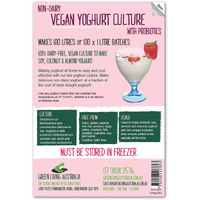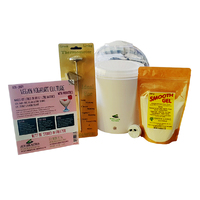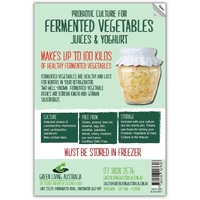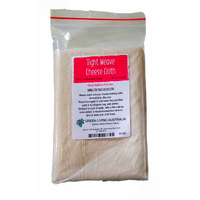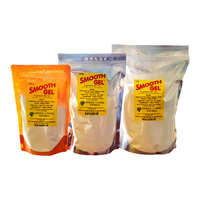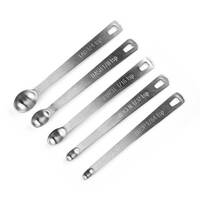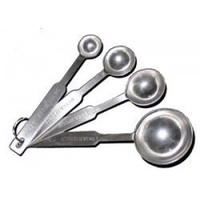Coconut Yoghurt Recipes
Make Coconut Yoghurt using Mild or Tangy Universal Yoghurt Culture or our Vegan Non-Dairy Culture.
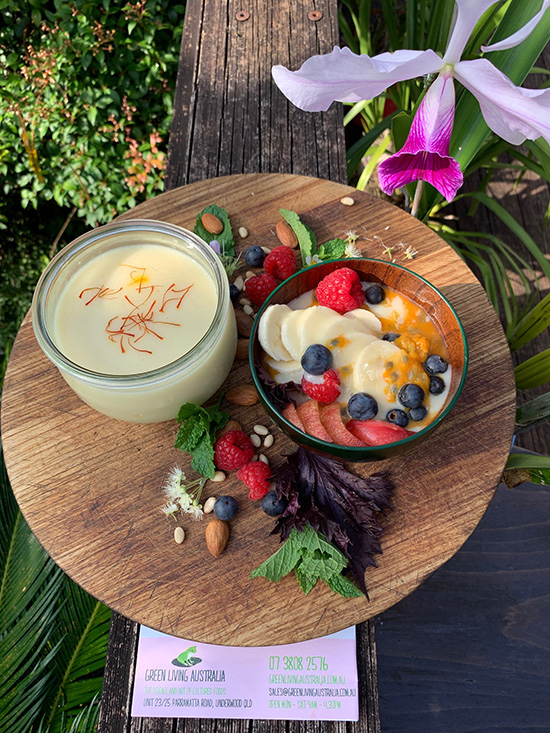
Photo courtesy; @jennymccrackenartist
Selection of culture:
The Non-Dairy Yoghurt Culture is a specially formulated culture that is not grown on a dairy base. This culture also contains gut-healthy probiotic bacteria and is vegan-friendly. Use of a thickening agent like Smooth Gel, rice flour or Classic Pectin is required.
Use the probiotic Mild and Tangy universal cultures to make beautiful gut-healthy probiotic coconut yoghurt. Use of a thickening agent like Smooth Gel, rice flour or Classic Pectin is required.
Thickening agent:
Smooth Gel: Is a pregelatinised rice flour that can be added to hot or cold foods and does not require "cooking" to activate the gelling properties.
Rice Flour: Acts as a gelling agent if it is "cooked". Cooking the coconut cream, sugar, and rice flour mixture prior to yoghurt making activates the gelling properties of the rice flour and prevents a grainy texture, or mouth feel, to the yoghurt.
Classic Pectin: Is a gelling agent used traditionally for jam making. It is advisable to pasteurise your coconut cream, sugar, and pectin mixture prior to yoghurt making; see the notes below.
Our preference is the Smooth Gel as it is so easy to use and can be added to finished, cold Coconut Cream Yoghurt to make it even thicker. If adding to cold yoghurt whisk in well and allow 12 hours for it to gel fully.
You Will Need The Following Items:
- A yoghurt maker large enough to hold one litre of milk.
- A dairy thermometer
- A sealed whisk
- Measuring spoons
Ingredients:
- 1 to 2 tablespoons of Smooth Gel (Smooth Gel is a rice product) OR 1 to 2 tablespoons of rice flour. If you cannot have rice try using 2-3 teaspoons of our Classic Pectin. (See the note at the bottom of the recipe)
- 1 litre of Coconut Cream (Approx)
- 1 tablespoon of sugar.
- 1 dose of Yoghurt Starter Culture
Quantities can be adjusted proportionally.
Note: The amount of culture used for one litre is VERY SMALL.
Directions - Smooth Gel:
- Warm 1 litre of coconut cream to between 37°C and 43°C and place into a yoghurt maker.
- Mix 1 tablespoon of sugar with your Smooth Gel and sprinkle into your coconut cream slowly while whisking vigorously to avoid clumping.
- Mix in your yoghurt starter culture, mixing in well to ensure the culture is evenly distributed throughout the milk.
- Maintain the temperature between 37°C and 43°C for 24 hours.
- Chill before serving.
Directions - Rice Flour:
- Mix 1 tablespoon of sugar with your rice flour and sprinkle into your coconut cream slowly while whisking vigorously to avoid clumping.
- Heat your coconut cream, sugar and rice flour mixture to approximately 85°C for a few minutes to cook the rice flour. This can be done in a pot or microwave, making sure to stir frequently.
- Allow to cool to between 37°C and 43°C and place into a yoghurt maker.
- Mix in your yoghurt starter culture, mixing in well to ensure the culture is evenly distributed throughout the milk.
- Maintain the temperature between 37°C and 43°C for 24 hours.
- Chill before serving.
Directions - Classic Pectin:
- Mix 1 tablespoon of sugar with your pectin and sprinkle into your coconut cream slowly while whisking vigorously to avoid clumping.
- Heat your coconut cream, sugar and pectin mixture to approximately 75°C for 30 seconds to pasteurise it. This can be done in a pot or microwave, making sure to stir frequently.
- Allow to cool to between 37°C and 43°C and place into a yoghurt maker.
- Mix in your yoghurt starter culture, mixing in well to ensure the culture is evenly distributed throughout the milk.
- Maintain the temperature between 37°C and 43°C for 24 hours.
- Chill before serving.
The sugar, agave nectar, maple syrup or golden syrup is added as a food source for the living culture. If your Coconut Yoghurt is too sweet, you can try reducing the amount, however, this is a bit of a balancing act between too sweet, and the culture not having enough complex carbohydrates to eat. Avoid using honey as the antibacterial properties of the honey may hinder the culture growth.
All coconut creams are not created equal. You may need to try a few different brands before you find the one you like the best.
For best results use coconut cream with a high content of coconut cream rather than one with lots of water in it.
This is our favourite brand and has a coconut cream content of 99.9%
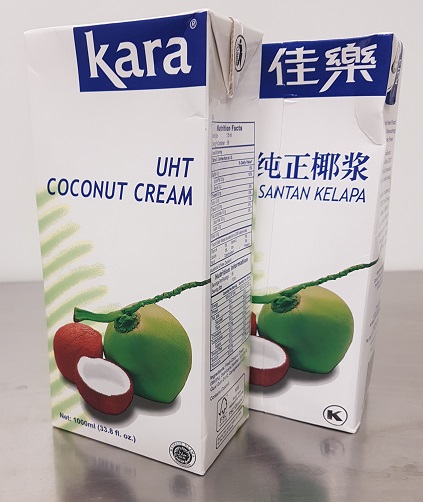
Comments:
The firmness and consistency will depend on the amount of thickener used and this can be varied to your personal taste.
You may also have different results depending on the brand of coconut cream used and how much water has been added to it.
Note on the use of Classic Pectin.
If you have a rice allergy and cannot use the Smooth Gel or rice flour you can use 2-3 teaspoons of our Classic Pectin per litre of coconut cream. Pectins are usually used to make jam and are usually added to boiling hot jam, killing any bacteria in the pectin. The total bacteria count in pectin can be higher than in products that are expected to be used cold and in the case of classic pectin the specification sheet states:
Specification: Total plate count aerobes:
bacteria: < 500 CFU/g pectin
yeast and mould: < 100 CFU/g pectin
The pasteurisation step is to help prevent any contamination that can come from the pectin itself.
The Video: How to make Coconut Yoghurt.
Make beautiful thick and creamy gut-healthy probiotic coconut yoghurt




